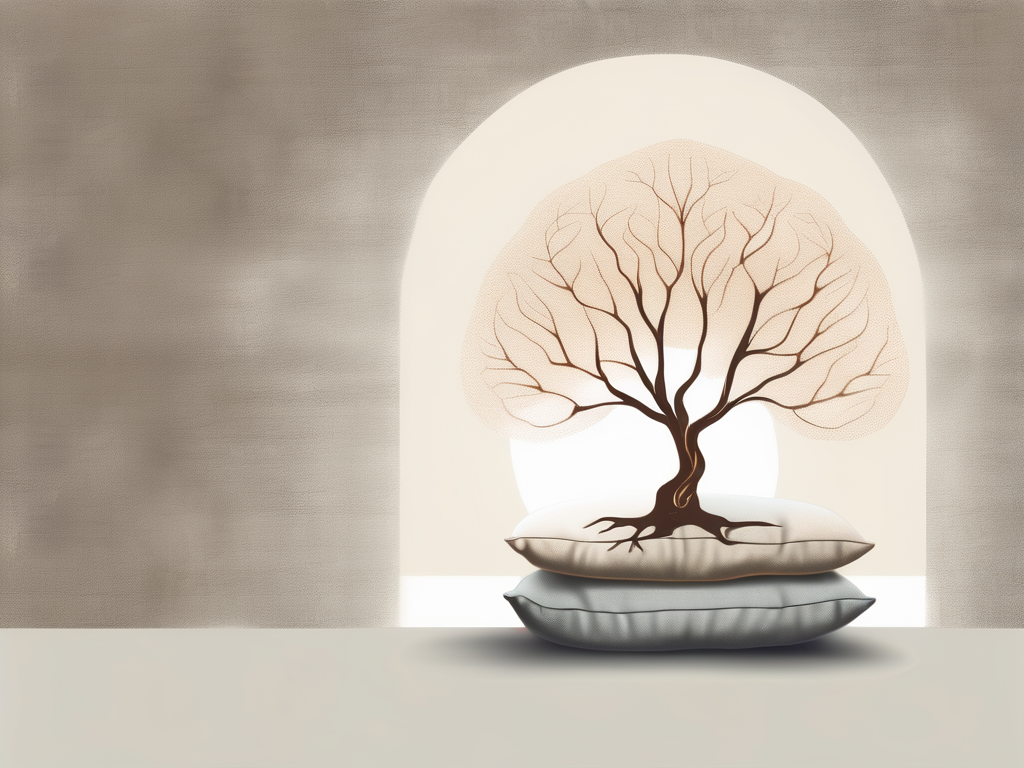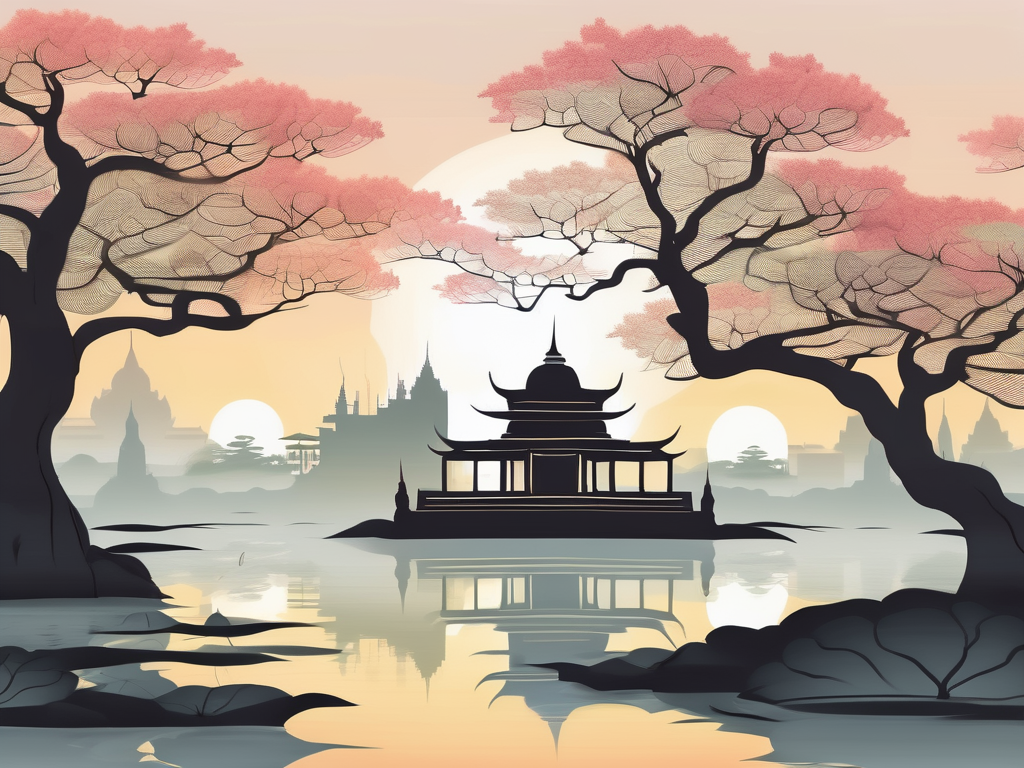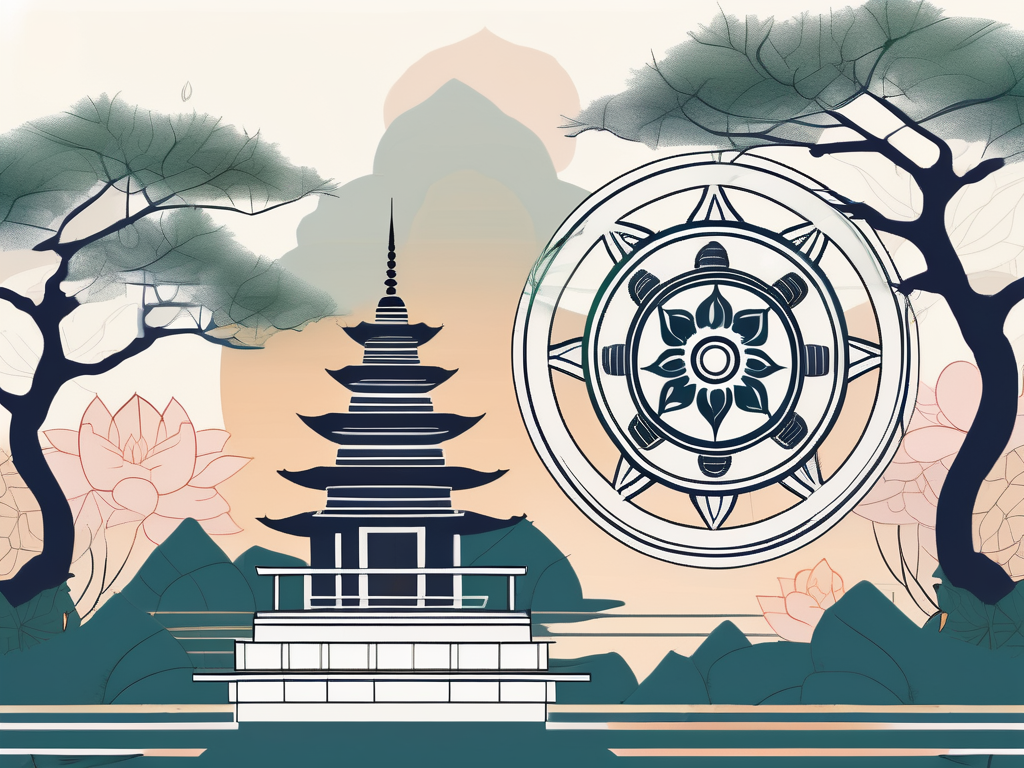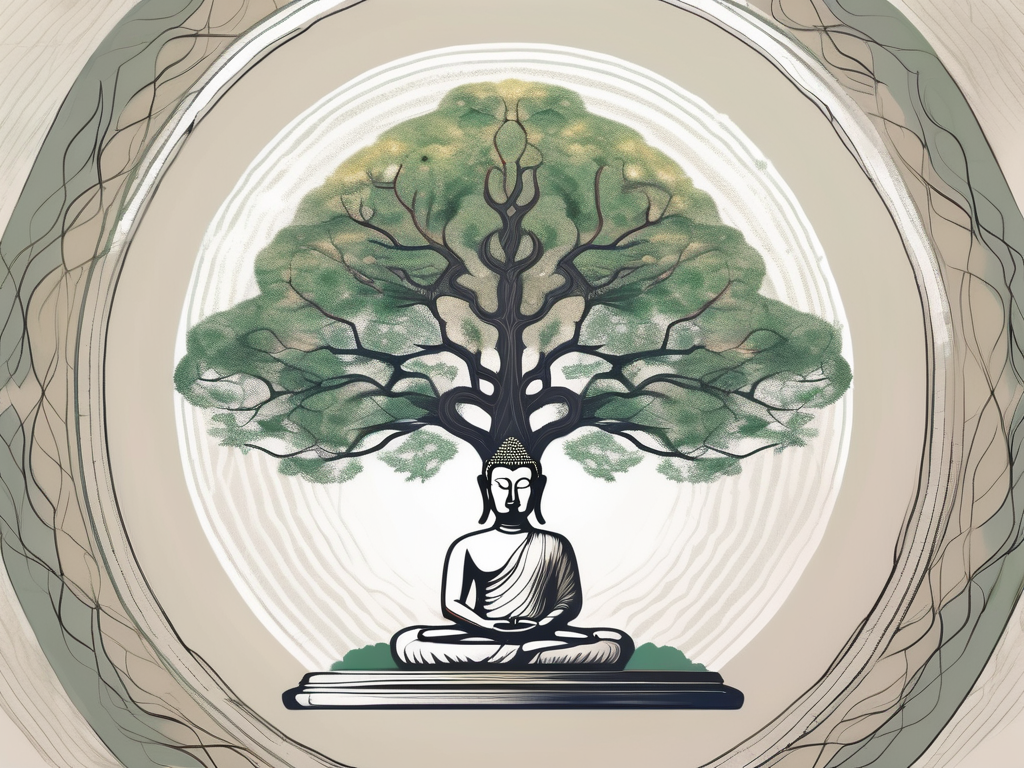Buddha poses, characterized by the serene and contemplative postures of the Buddha, hold deep significance in Buddhist art and practice. These poses are not mere artistic representations, but they are infused with profound symbolism that sheds light on the spiritual and philosophical teachings of Buddhism. By exploring the meaning behind Buddha poses, we can gain a deeper understanding of their significance and appreciate their beauty in a new light.
Understanding the Significance of Buddha Poses
In order to appreciate the meaning behind Buddha poses, it is important to understand their origins. The poses originated from the historical Buddha himself, Siddhartha Gautama, and have since evolved to convey various aspects of his teachings and journey towards enlightenment.
Buddha poses play a vital role in Buddhist practice, as they help practitioners establish a connection with the teachings of the Buddha and cultivate inner peace and mindfulness. These poses serve as physical representations of the Buddha’s wisdom and compassion, inviting practitioners to embody these qualities in their own lives.
The Origin of Buddha Poses
The origin of Buddha poses can be traced back to the life of Siddhartha Gautama. After renouncing his privileged life as a prince, Siddhartha embarked on a spiritual quest to seek enlightenment. He practiced rigorous meditation under the Bodhi tree and eventually attained enlightenment, becoming the Buddha.
During his time as a wandering ascetic, the Buddha discovered various postures that allowed him to deepen his meditation and connect with the divine. These postures were later adopted by Buddhist artists and sculptors to portray the Buddha in his enlightened state.
One of the most well-known Buddha poses is the “Lotus Position” or “Padmasana.” This pose represents the Buddha’s ability to remain calm and centered amidst the chaos of the world. It symbolizes the purity of the lotus flower emerging from muddy waters, reminding practitioners that they too can rise above the challenges of life and find inner peace.
Another significant Buddha pose is the “Mudra of Teaching” or “Dharmachakra Mudra.” In this pose, the Buddha is depicted with both hands held in front of his chest, forming a circle with his thumb and index finger. This mudra represents the Buddha’s first sermon, known as the “Turning of the Wheel of Dharma,” where he taught the Four Noble Truths and the Eightfold Path. By assuming this pose, practitioners seek to connect with the Buddha’s teachings and gain insight into the nature of suffering and the path to liberation.
The Role of Buddha Poses in Buddhist Practice
Buddha poses serve as a visual reminder of the path to enlightenment. By assuming these poses during meditation and contemplation, practitioners seek to embody the qualities of the Buddha and cultivate inner peace.
The poses also serve as a gateway to different stages of Buddhist practice, illustrating different aspects of the Buddha’s teachings. Each pose represents a specific teaching or virtue, allowing practitioners to focus on specific aspects of their spiritual journey.
For example, the “Abhaya Mudra” or “Fearlessness Gesture” is a pose where the Buddha is depicted with his right hand raised, palm facing outward. This mudra represents the Buddha’s ability to dispel fear and offer protection. By assuming this pose, practitioners can cultivate courage and fearlessness in the face of adversity.
Another significant Buddha pose is the “Bhumisparsha Mudra” or “Earth-Touching Gesture.” In this pose, the Buddha is depicted with his right hand touching the ground, symbolizing his enlightenment and his connection with the earth. This mudra represents the Buddha’s triumph over Mara, the personification of delusion and ignorance. By assuming this pose, practitioners can ground themselves in the present moment and gain a deeper understanding of the nature of reality.
Overall, Buddha poses serve as powerful tools for spiritual growth and self-transformation. They provide a visual and physical representation of the Buddha’s teachings, allowing practitioners to deepen their understanding and embody the qualities of wisdom, compassion, fearlessness, and enlightenment.
The Different Types of Buddha Poses
There are several different types of Buddha poses, each with its own unique symbolism and purpose. Let’s explore some of the most commonly portrayed poses in Buddhist art.
The Meditation Pose
One of the most iconic Buddha poses is the meditation pose, also known as the lotus position. In this pose, the Buddha is depicted sitting cross-legged, with his hands resting on his lap. This pose symbolizes deep concentration, tranquility, and inner peace. It encourages practitioners to cultivate mindfulness and develop a focused mind during meditation.
When the Buddha is depicted in the meditation pose, it is often believed to represent his attainment of enlightenment under the Bodhi tree. The lotus position itself is significant, as it represents the purity and beauty that can arise from the muddy waters of existence. The crossed legs symbolize the union of wisdom and compassion, two essential qualities on the path to enlightenment.
Practicing meditation in the same pose as the Buddha can help individuals connect with their own inner wisdom and find peace amidst the chaos of daily life. It is a reminder to slow down, be present, and cultivate a deep sense of calm within.
The Protection Pose
The protection pose, also known as the abhaya mudra, is characterized by the Buddha standing upright with his right hand raised, palm facing outward. This pose symbolizes fearlessness and protection. It is believed to ward off negativity and provide a sense of security to practitioners.
When the Buddha is depicted in the protection pose, it is often seen as a powerful symbol of his ability to shield his followers from harm and guide them towards enlightenment. The raised hand represents the dispelling of fear and the assurance of safety. It is a gesture of reassurance and encouragement, reminding practitioners that they are not alone on their spiritual journey.
By meditating on the protection pose, individuals can cultivate a sense of inner strength and courage. It serves as a reminder that they have the power to overcome obstacles and face challenges with resilience and grace.
The Teaching Pose
The teaching pose, or the dharmacakra mudra, is depicted with the Buddha sitting cross-legged, with his right hand raised in a gesture of teaching and his left hand resting on his lap. This pose symbolizes the Buddha’s role as a teacher and the continuous transmission of his teachings. It signifies the importance of learning and sharing wisdom with others.
When the Buddha is depicted in the teaching pose, it is often seen as a representation of his first sermon, known as the Dhammacakkappavattana Sutta. This sermon marked the beginning of his teaching career and the establishment of the Buddhist community. The raised hand represents the turning of the wheel of Dharma, symbolizing the continuous flow of wisdom and guidance.
By meditating on the teaching pose, individuals can cultivate a thirst for knowledge and a deep appreciation for the teachings of the Buddha. It serves as a reminder to seek wisdom, ask questions, and share knowledge with others, fostering a sense of community and interconnectedness.
The Blessing Pose
The blessing pose, also known as the varada mudra, is characterized by the Buddha sitting or standing with his right hand stretched downward, palm facing outward. This pose represents the Buddha’s act of bestowing blessings and compassion onto the world. It is a powerful symbol of divine grace and kindness.
When the Buddha is depicted in the blessing pose, it is often seen as a representation of his boundless compassion and desire to alleviate the suffering of all beings. The downward hand gesture signifies the act of giving and the outpouring of blessings. It is a reminder that compassion is not limited or exclusive, but rather, it is meant to be shared with all.
By meditating on the blessing pose, individuals can cultivate a sense of compassion and empathy towards others. It serves as a reminder to extend kindness and support to those in need, fostering a more harmonious and compassionate world.
The Symbolism Behind Each Pose
Beyond the physical postures, Buddha poses are rich in symbolic meaning. They convey profound messages and teachings through various elements, such as hand gestures, leg positions, and facial expressions.
When we delve deeper into the symbolism behind each pose, we uncover a world of wisdom and insight that can guide us on our spiritual journey.
The Meaning of Hand Gestures
In Buddha poses, hand gestures, known as mudras, play a significant role in conveying specific teachings and qualities. Each mudra has its own unique meaning, representing virtues such as wisdom, compassion, and protection.
For example, the Abhaya mudra, where the right hand is raised with the palm facing outward, signifies fearlessness and protection. It reminds us to let go of our fears and trust in the path of enlightenment.
On the other hand, the Dhyana mudra, where both hands are placed on the lap with the palms facing upward, represents meditation and inner reflection. It encourages us to find stillness within and connect with our innermost selves.
The Significance of Leg Positions
The position of the legs in Buddha poses also carries symbolic meaning. The cross-legged position, commonly seen in meditation poses, represents stability and groundedness. It reflects the practitioner’s ability to remain calm and composed amidst the challenges of life.
Moreover, the lotus position, where both legs are crossed and the feet rest on the opposite thighs, holds a profound symbolism. It is associated with spiritual purity and enlightenment. The lotus flower, rooted in muddy waters, symbolizes the blossoming of wisdom and the attainment of higher states of consciousness.
Another leg position, the half-lotus, where one foot rests on the opposite thigh while the other is placed on the ground, represents balance and harmony. It reminds us of the importance of finding equilibrium in our lives, both internally and externally.
The Importance of Facial Expressions
In addition to hand gestures and leg positions, facial expressions are another crucial element in Buddha poses. The serene and peaceful expressions on the Buddha’s face invite practitioners to cultivate inner tranquility and stillness.
As we gaze upon the tranquil countenance of the Buddha, we are reminded of the inherent peace that can be found within ourselves, even amidst the chaos of the world. The gentle smile on the Buddha’s lips serves as a reminder to approach life with kindness and compassion.
Furthermore, the half-closed eyes in Buddha poses symbolize the state of deep meditation and inner focus. They encourage us to turn our attention inward, to explore the depths of our own consciousness, and to discover the boundless potential that lies within.
By understanding the symbolism behind each pose, we can deepen our practice and gain a deeper appreciation for the teachings of the Buddha. As we embody these poses, we not only connect with the physical aspects but also with the profound wisdom they represent.
Interpreting Buddha Poses in Art and Sculpture
Buddha poses have significantly influenced Buddhist art throughout history. From sculptures to paintings, artists have sought to capture the essence of the Buddha’s teachings through their creations.
Identifying Buddha Poses in Artwork
When appreciating Buddhist art, it is essential to identify and interpret the Buddha poses depicted. Each pose conveys its own unique symbolism and message, allowing viewers to delve deeper into the artwork’s meaning.
By understanding the significance of the pose and its associated teachings, viewers can gain a more profound appreciation of the artwork and the spiritual truths it represents.
The Influence of Buddha Poses on Buddhist Art
Buddha poses have had a profound influence on the development of Buddhist art. These poses have inspired artists and sculptors to create masterpieces that capture the essence of the Buddha’s teachings and transmit them through visual representation.
Through their work, artists aim to evoke a sense of reverence and make the teachings of the Buddha accessible to a broader audience. The artistry and symbolism of Buddha poses continue to inspire and guide artistic expressions within the Buddhist tradition.
In conclusion, the meaning behind Buddha poses goes beyond their aesthetic appeal. These poses are vehicles for teachings and wisdom, inviting practitioners to connect with the profound teachings of Buddhism. By understanding the symbolism of Buddha poses, we can deepen our appreciation for their significance and embark on a spiritual journey towards inner peace and enlightenment. Whether encountered in artwork or adopted during meditation, these poses serve as reminders of the timeless wisdom and compassion embodied by the historical Buddha himself.












